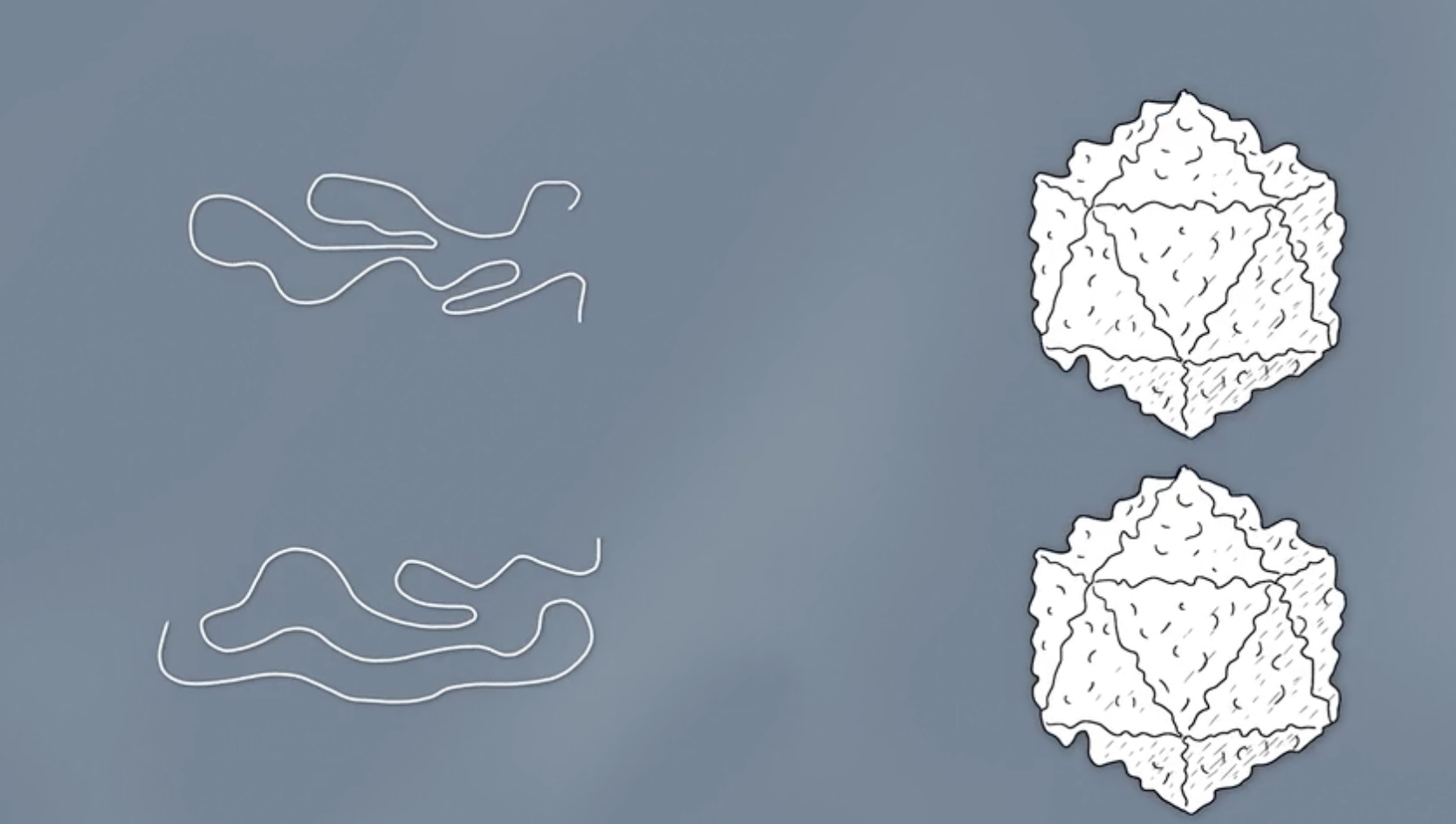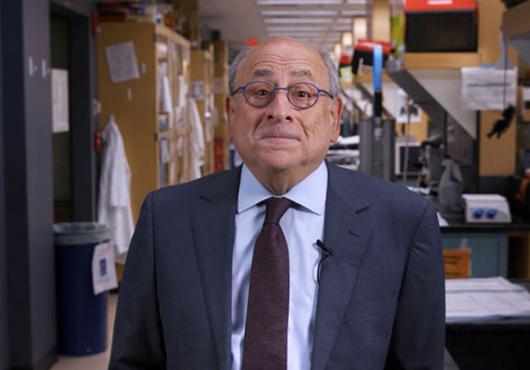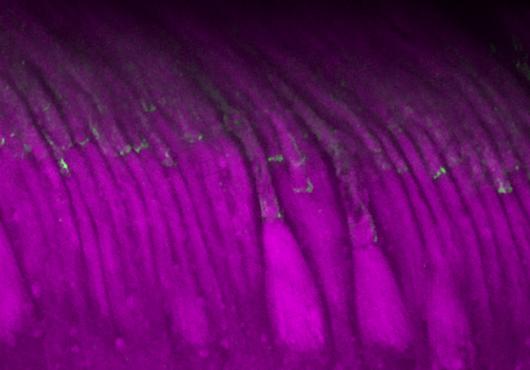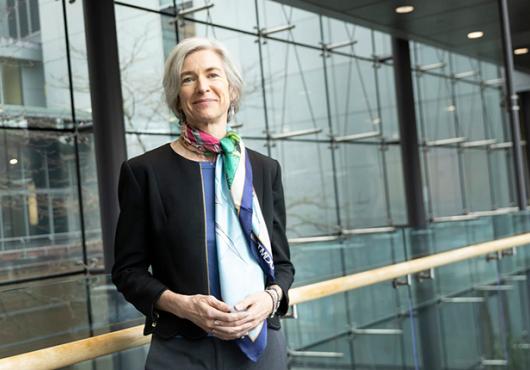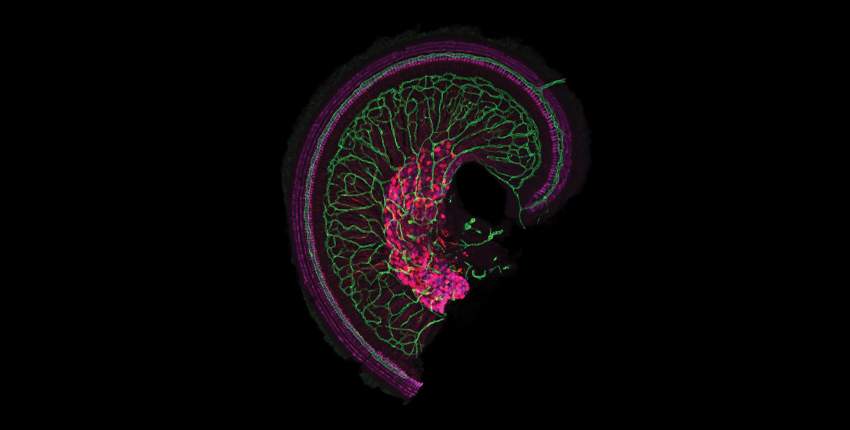
Hair cells, shown in magenta, in the snail-shaped cochlea of the inner ear. Image: Katelyn Comeau
At a glance:
- Trial treated six children aged 1 to 7 who had a mutation in the OTOF gene, which manufactures a protein important in transmitting signals from the ear to the brain.
- The five participants who responded to treatment showed improvement in the ability to recognize sound as speech.
- The gene therapy technique used in the study overcomes a roadblock presented by large genes and may prove useful in developing treatments for other forms of genetic deafness.
A novel gene therapy approach has given five children who were born deaf the ability to hear. The method, which overcomes a roadblock presented by large genes, may be useful in other treatments, according to researchers.
The work, conducted in Fudan, China, by a team co-led by Harvard Medical School researchers at Massachusetts Eye and Ear and by collaborators at Fudan University’s Eye & ENT Hospital, treated six children aged 1 to 7 who had a mutation of the OTOF gene, which manufactures a protein important in transmitting signals from the ear to the brain.
Five of the six children showed improvement in hearing over the 26-week trial, with four outcomes described by researchers as “robust.” With hearing a critical factor in language acquisition, researchers also measured speech perception — the ability to recognize sound as speech — and all five of those who responded to treatment showed improvement there.
Findings were published Jan. 24 in The Lancet.
“This really opens the door to developing other treatments for different kinds of genetic deafness,” said co-senior author Zheng-Yi Chen, HMS associate professor of otolaryngology head and neck surgery and a researcher at Mass Eye and Ear’s Eaton-Peabody Laboratories. Chen added that the study provides proof-of-concept that prior work in laboratory animals does translate to humans. “Now we can move forward in humans quickly. This has given us a real boost of confidence.”
Hearing loss affects more than 1.5 billion people worldwide, Chen said, including about 30 million cases of genetic impairment in children. Approximately 200,000 people worldwide are deaf due to a mutation in the OTOF gene. Those in the current trial had an OTOF mutation called DFNB9, which affects 2 to 8 percent of all cases of genetic deafness from birth.
The OTOF gene encodes the otoferlin protein, produced by cells in a snail-shaped part of the inner ear called the cochlea. In the cochlea, sound waves are translated into electric pulses carried by nerve cells to the brain, where they are interpreted as sound. Otoferlin plays a role in transmitting pulses from cochlear cells to the nerves and without it, sound is translated into electric signals but never reach the brain.
Chen and co-senior author Yilai Shu, deputy director of the Fudan hospital where the work took place, said DFNB9 provided an attractive gene-therapy target because it is a relatively simple condition, caused by a single mutation and involving no physical damage to the cochlear cells.
Shu, who was a postdoctoral fellow in Chen’s lab from 2010 to 2014, said the large response to the request for study participants reflects the need for improved treatment for congenital deafness for which, Chen pointed out, there are no approved drugs. Researchers ultimately screened 425 potential participants, enrolling just six.
Of the six, four had cochlear implants — which, with training, allow interpretation of speech and sound — in one ear while the two youngest participants, ages 1 and 2, had no implants. When the implants were switched off, all participants were completely deaf.
Before the trial began, researchers had to tackle a significant technical problem related to the size of the OTOF gene. The procedure called for the gene to be inserted into the cochlea using a type of virus researchers commonly use for this purpose.
The virus inserts the gene into the DNA of target cells, which then begin to manufacture the missing protein. The problem in this case is that the OTOF gene is too big for the virus to hold. Researchers got past this by dividing the gene into two, encapsulating the halves into separate viruses, and then injecting a mixture with both halves of the gene into the cochlea.
Though the viruses inserted the gene halves at different spots on the cells’ DNA, when those halves were expressed, cellular machinery assembled the complete protein, restoring the cells’ ability to transmit signals to the brain.
